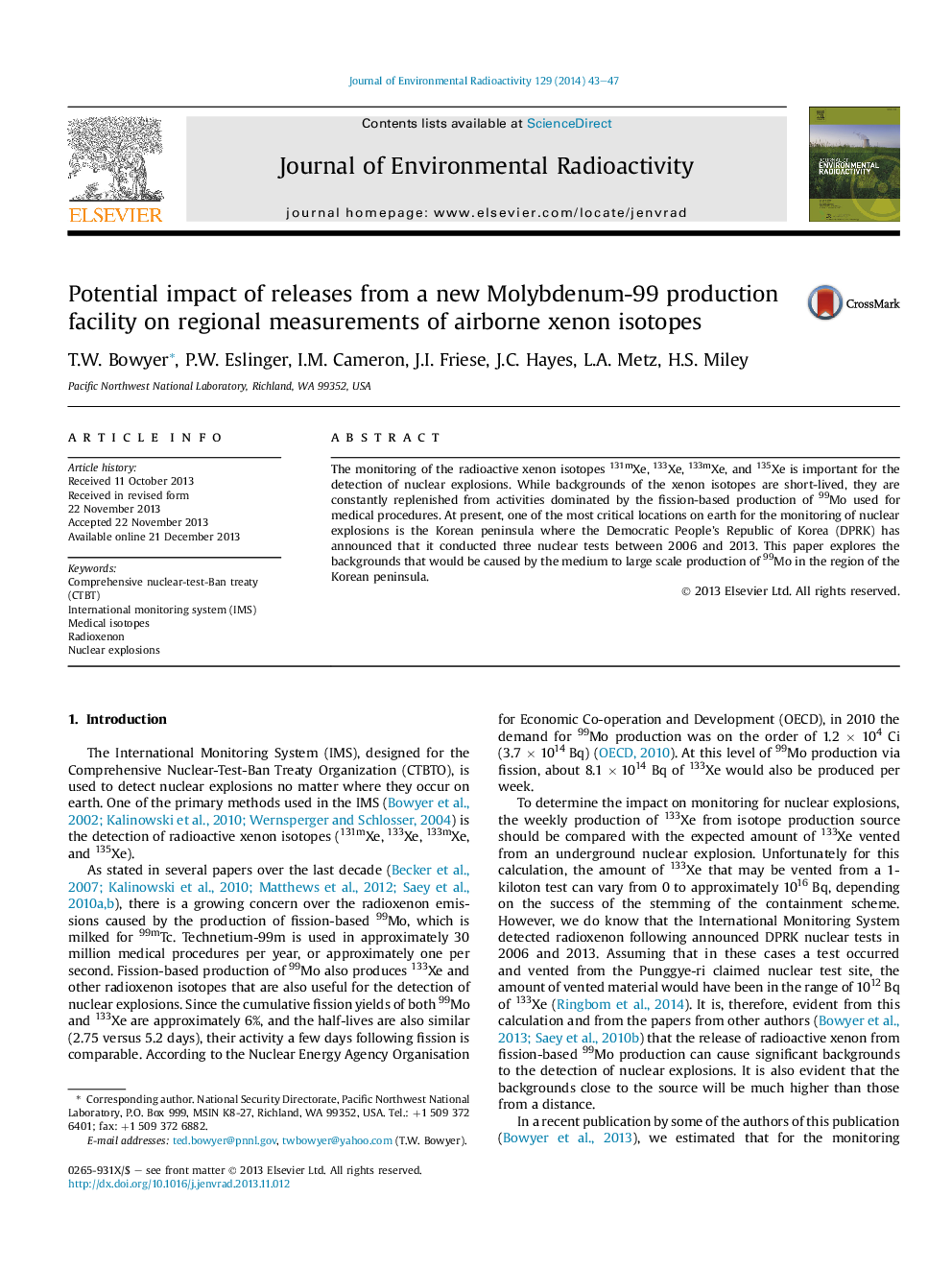| Article ID | Journal | Published Year | Pages | File Type |
|---|---|---|---|---|
| 1738068 | Journal of Environmental Radioactivity | 2014 | 5 Pages |
•Molybdenum-99 production causes emissions that impact nuclear explosion detection.•Large radioxenon emissions in the Korean peninsula significantly affect monitoring.•Radioxenon emissions below 109 Bq/d are possible but will not affect monitoring.
The monitoring of the radioactive xenon isotopes 131mXe, 133Xe, 133mXe, and 135Xe is important for the detection of nuclear explosions. While backgrounds of the xenon isotopes are short-lived, they are constantly replenished from activities dominated by the fission-based production of 99Mo used for medical procedures. At present, one of the most critical locations on earth for the monitoring of nuclear explosions is the Korean peninsula where the Democratic People's Republic of Korea (DPRK) has announced that it conducted three nuclear tests between 2006 and 2013. This paper explores the backgrounds that would be caused by the medium to large scale production of 99Mo in the region of the Korean peninsula.
